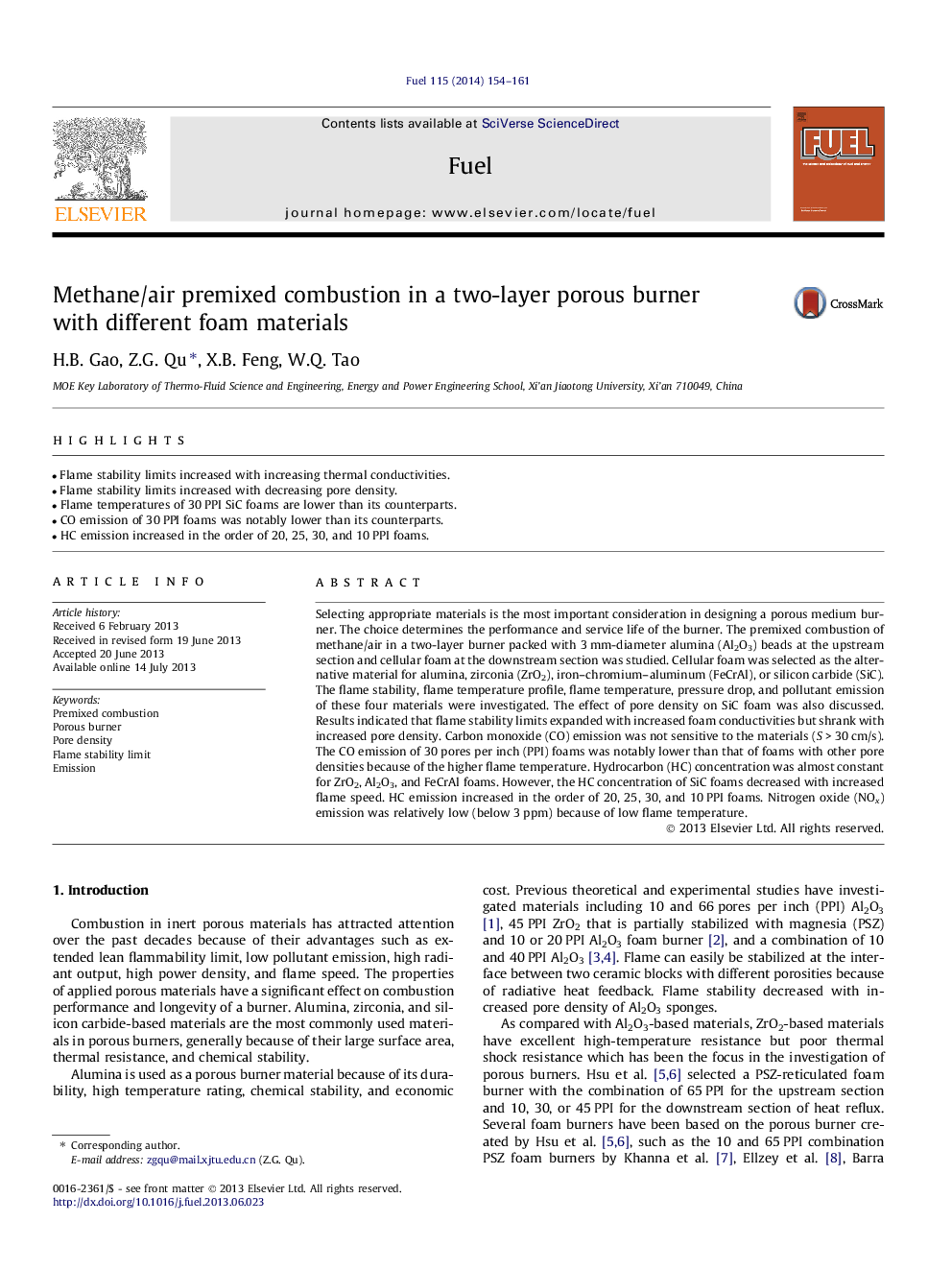| Article ID | Journal | Published Year | Pages | File Type |
|---|---|---|---|---|
| 6639243 | Fuel | 2014 | 8 Pages |
Abstract
Selecting appropriate materials is the most important consideration in designing a porous medium burner. The choice determines the performance and service life of the burner. The premixed combustion of methane/air in a two-layer burner packed with 3Â mm-diameter alumina (Al2O3) beads at the upstream section and cellular foam at the downstream section was studied. Cellular foam was selected as the alternative material for alumina, zirconia (ZrO2), iron-chromium-aluminum (FeCrAl), or silicon carbide (SiC). The flame stability, flame temperature profile, flame temperature, pressure drop, and pollutant emission of these four materials were investigated. The effect of pore density on SiC foam was also discussed. Results indicated that flame stability limits expanded with increased foam conductivities but shrank with increased pore density. Carbon monoxide (CO) emission was not sensitive to the materials (SÂ >Â 30Â cm/s). The CO emission of 30Â pores per inch (PPI) foams was notably lower than that of foams with other pore densities because of the higher flame temperature. Hydrocarbon (HC) concentration was almost constant for ZrO2, Al2O3, and FeCrAl foams. However, the HC concentration of SiC foams decreased with increased flame speed. HC emission increased in the order of 20, 25, 30, and 10Â PPI foams. Nitrogen oxide (NOx) emission was relatively low (below 3Â ppm) because of low flame temperature.
Related Topics
Physical Sciences and Engineering
Chemical Engineering
Chemical Engineering (General)
Authors
H.B. Gao, Z.G. Qu, X.B. Feng, W.Q. Tao,
